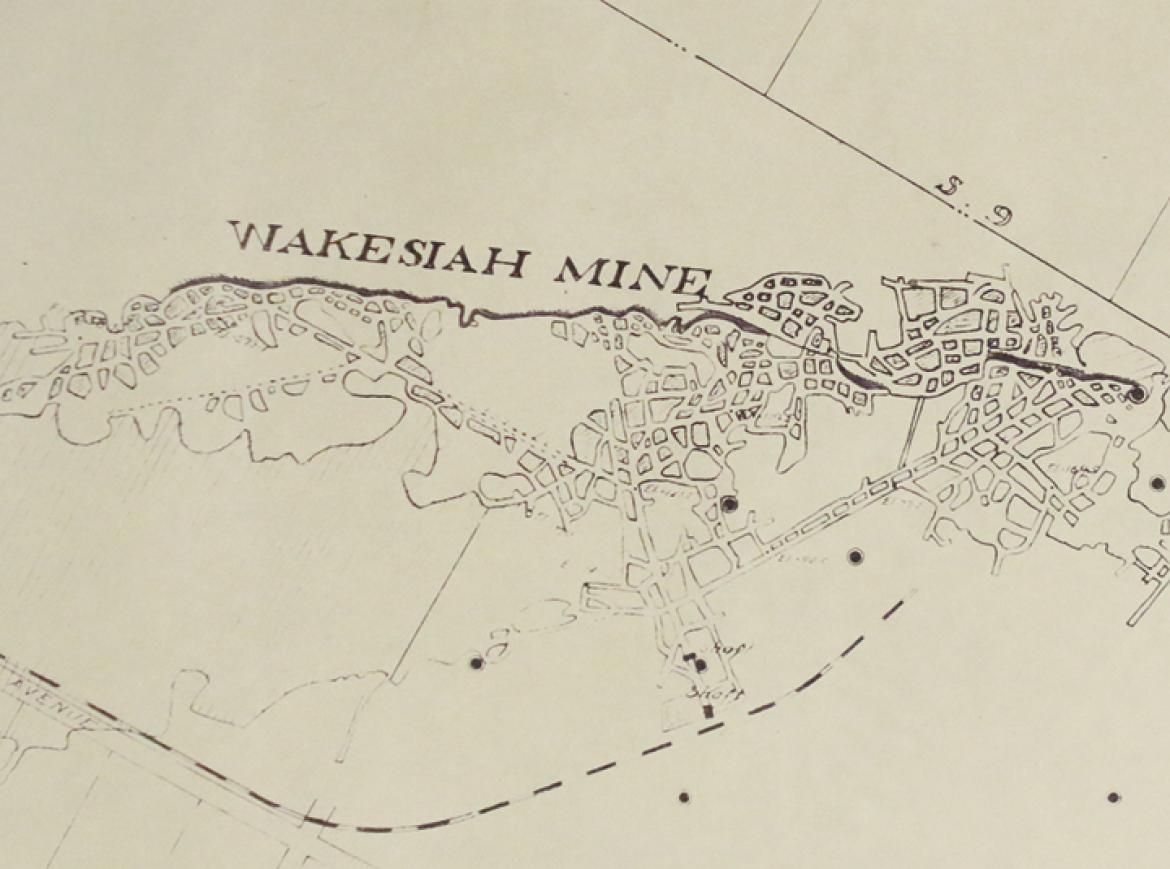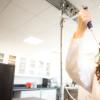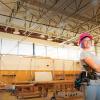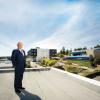
January 8, 2018 - 6:15pm
By Dane Gibson
A new project at VIU’s Nanaimo campus is using the flooded, abandoned coal mines underneath the campus to build a greener future. Here’s how.
Nobody could predict that the scores of workers who toiled in the Wakesiah coal mine in the early 1900s would be providing the infrastructure needed to heat and cool buildings at a Nanaimo university – nearly a century later.
VIU’s $2.4-million District Geo-Exchange Energy System is currently under construction and its success relies on a subterranean coal mine of yesteryear. The project is being funded in part through the federal government’s Post-Secondary Institutions Strategic Investment Fund ($1.1 million) with the remainder coming from VIU in collaboration with the University’s community partners.
The system will use the energy stored in water trapped in the abandoned Wakesiah Mine, which stays at a relatively constant 11°C, to heat and cool buildings on campus.
“If you lay schematics of the Nanaimo campus on top of a blueprint of the Wakesiah Mine it matches perfectly for what we are trying to do. It’s as if it were planned out this way,” says Jeff Quibell, lead geo-exchange engineer with Falcon Engineering, the company responsible for guiding the project to completion. “It’s remarkable that so many decades later we are repurposing what is considered one of the dirtiest forms of energy, and turning that legacy into the cleanest form of energy.”
The mine workings underneath VIU were originally accessed from a tram that operated from where the current sports fields are behind Nanaimo District Secondary School on Wakesiah Avenue. From 1918 to 1930, workers took the tram deep into the Wakesiah coal mine. The same tram took the coal they mined out. Once the mine was shut down, the pumps that kept the tunnels from flooding were turned off and groundwater slowly filled the mine.
“The mine workings underneath the University are at varying elevations between 425 and 625 feet deep,” says Quibell, whose company drilled a test well back in 2010 when the idea of geo-exchange was first being explored. “For every 100 feet you drill, the ground temperature increases by half a degree Celsius. It’s that energy from the Earth that the water captures and it’s why this is such an effective, reliable source of heat.”
How It Works
The project includes construction of two water loops. The first is a mine water loop and the second is an ambient water loop. Both rely on two wells that have been drilled on campus. The mine water loop will bring the water to the surface, direct it through a pump house and then back to the mine. The ambient water loop takes the water from the pump house, sends it to buildings that are attached to the system, and returns it back to the pump house, where the water rejoins the mine water loop. It means the water used by the system is recycled continuously.
“The water is brought up by the extraction well on the north side of campus and from there is directed through a heat exchanger to campus buildings that will be equipped to use it,” says VIU project manager Debra Smilski. “The injection well is on the south side of campus, which is where the water will go back underground, completing the loop. Depending on the season, the water will either be heating or cooling the buildings that are connected to the system.”
The new Health and Science Centre, which is also currently under construction, the Academic and Career Preparation building and Shq’apthut, VIU’s Aboriginal Gathering Place, will be the first buildings to be connected to the District Geo-Exchange Energy System. As the system moves from Phase 1 to subsequent phases, other buildings on campus will be considered.
Geo-exchange uses heat pumps to transfer the heat captured in the water to the buildings. Electricity is used to drive those heat pumps, but in BC power is derived from hydro, which makes the impact of that use negligible.
“For each unit of electrical energy used, the geo-exchange will produce four units of heat,” says Quibell. “That means three heat units are clean, renewable energy drawn from the ground. It’s why the heating and cooling provided by the system is virtually greenhouse gas free.”
Smilski says once completed, a pump house will be the only visible structure on campus associated with the project. It will house heat pumps and the state-of-the-art technology required to monitor and regulate system operations.
“The goal of the project is first to ensure new structures built on campus are connected to the geo-exchange system and, as the project moves forward, to replace aging heating and cooling systems in older VIU buildings with new equipment that can use the sustainable energy resource that will be available on campus,” says Smilski. “This project allows the University to significantly reduce its carbon footprint and engage in research and innovation in this important area.”
Going Green
Using the geo-exchange energy will enable VIU’s main campus to reduce its carbon output for heating and cooling new buildings to near zero. It will also position the institution as a leader in post-secondary clean technology. VIU’s Cowichan Campus and Deep Bay Marine Field Station also use geo-exchange energy for heating and cooling.
“This is a major step towards fulfilling VIU’s commitment to sustainability, which includes significantly reducing our carbon footprint,” says Dr. Ralph Nilson, VIU President and Vice-Chancellor. “In later phases of the project, we will reach out to partners like the City of Nanaimo and School District 68 so that future renovations of their facilities may also benefit from the system.”
The project is expected to be fully operational in 2018.
SIDEBAR: Wakesiah Mine Fast Facts
• Owner: Canadian Western Fuel Company, successor to the Vancouver Coal Mining and Land Company, the successors to the original Hudson’s Bay Company coal mining operation
• 1918: first year of development – no coal mined until 1919
• 2 - 20 feet: depth of coal seam
• In 1928: 76,000 tons of coal were mined and 151 workers were employed both above and below ground
• 1930: mine was permanently abandoned and the shafts were allowed to fill with water
• 2018: District Geo-Exchange Energy System begins operating at VIU, using the thermal energy in the water in the abandoned coal mines to heat and cool buildings on campus
Source: Nanaimo Community Archives
SIDEBBAR: #VIUBuilds
The District Geo-Exchange Energy System is one of three ongoing major projects at VIU’s Nanaimo campus with a total price tag of more than $60 million. The projects are made possible by investments from the federal government through the Post-Secondary Institutions Strategic Investment Fund, the provincial government, VIU and the University’s community partners. Along with the geo-exchange, a Health and Science Centre and Marine, Automotive and Trades Complex are currently under construction.
The Health and Science Centre will provide a new home to VIU’s Bachelor of Science in Nursing, Practical Nursing, Health Care Assistant and Chemistry programs. It will also house the University’s renowned Applied Environmental Research Laboratories, a world-class chemical analysis research and training lab. The Marine, Automotive and Trades Complex project will provide a state-of-the-art new hub for the University’s trades programs. The project includes more than 4,000 m2 of both new and renovated space, allowing VIU address waitlists in high-demand programs.
These projects will help VIU train students for the jobs of the future and address critical skills shortages on the Island. They will also allow for expanded research and industry partnership capacity. For more information on these projects, visit viu.ca/campus-development.
*This article originally appeared in the Winter 2017/18 edition of VIU Magazine. Check out more stories on the VIU Magazine webpage.
Tags: Construction | Sustainability | VIU Magazine







